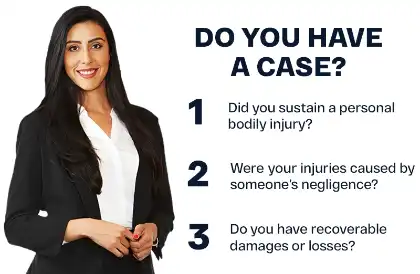A 22-year-old man was killed and five others were injured in a suspected DUI crash in Stanislaus County on Friday evening, July 11, 2025.
According to the California Highway Patrol, the two-vehicle collision occurred shortly before 5:45 p.m. on Carpenter Road, just south of Taylor Road.
Officers reported that a Honda sedan driven by a 22-year-old Modesto man was traveling northbound when he crossed over the double yellow lines while turning left, directly into the path of a southbound 2015 Chevrolet Tahoe.
The Honda driver was transported to a hospital, where he later died from his injuries. The driver of the Tahoe and four additional individuals were also taken to a hospital with major injuries.
CHP stated that DUI is believed to be a factor in the crash and noted that not all occupants were wearing seatbelts. The investigation is ongoing.
Contact Our DUI Accident Victim Lawyers In Stanislaus County, CA
Left turn accidents involving drivers under the influence can result in serious injuries or fatalities, creating significant physical, emotional, and financial challenges for victims and their families. Understanding your legal rights after a DUI-related crash can help you explore potential options for compensation.
DUI accident victim lawyers in Stanislaus County can help you review the circumstances of a collision involving a suspected impaired driver. Legal support may include examining accident reports, assisting with insurance claims, and explaining how compensation may be pursued for medical expenses, funeral costs, lost wages, and other damages. Consulting a lawyer early may help clarify potential next steps and ensure your rights are understood.
If you or a loved one has been injured in a fatal car accident, call our car accident lawyers in Stanislaus County at (888) 488-1391 or fill out our “Do I Have a Case?” form for a free initial consultation.
What To Do After A DUI Accident In Stanislaus County, CA
DUI accidents, especially those resulting in fatalities, can be particularly traumatic. Taking the right steps afterward may help protect your rights and preserve important evidence for potential claims.
- Call 911 And Seek Medical Attention
Report the accident to emergency services immediately and ensure that anyone injured receives prompt evaluation. Some injuries may not be immediately visible, even if they appear minor. - Document The Scene And Damage
If it is safe, take photographs of the accident scene, vehicles involved, and any visible injuries. This documentation can be valuable for insurance claims or legal purposes. - Gather Information From Witnesses
Collect names and contact details from witnesses to the collision. Their statements may help clarify the circumstances surrounding the accident. - Consult With Personal Injury Lawyers
Personal injury lawyers in Stanislaus County can review your legal options, assist with insurance matters, and help preserve time-sensitive evidence. Early legal involvement may help protect your rights and ensure the case is handled properly.
DUI Accident Statistics
Alcohol-impaired driving is still one of the leading safety problems on roads across the United States. According to the National Safety Council, 12,429 people died in crashes involving alcohol in 2023. This number was 7.6 percent lower than the year before, showing improvement for the second year in a row.
A crash is considered alcohol-impaired if at least one driver or motorcyclist involved has a blood alcohol concentration (BAC) of 0.08 grams per deciliter or higher. This is the legal limit in most states, and driving over that level is dangerous and illegal.






![[12-15-2025] Sacramento County, CA – One Killed, Another Injured After Collision With Semi-Truck Near Highway 12 and Highway 160 in Isleton](https://arashlaw.com/wp-content/uploads/2025/12/12-15-2025-Sacramento-County-CA-–-One-Killed-Another-Injured-After-Collision-With-Semi-Truck-Near-Highway-12-and-Highway-160-in-Isleton-420x249.webp)
![[12-13-2025] San Bernardino County, CA – At Least One Injured After Fiery Semi-Truck Crash on 15 Freeway in Devore](https://arashlaw.com/wp-content/uploads/2025/12/12-13-2025-San-Bernardino-County-CA-–-At-Least-One-Injured-After-Fiery-Semi-Truck-Crash-on-15-Freeway-in-Devore-420x249.webp)
![[12-14-2025] Sacramento County, CA – One Killed, Two Injured After Multi-Vehicle Crash on Mack Road](https://arashlaw.com/wp-content/uploads/2025/12/12-14-2025-Sacramento-County-CA-–-One-Killed-Two-Injured-After-Multi-Vehicle-Crash-on-Mack-Road-420x249.webp)
![[12-14-2025] Solano County, CA – Pedestrian Killed in DUI Crash on Sonoma Boulevard in Vallejo](https://arashlaw.com/wp-content/uploads/2025/12/12-14-2025-Solano-County-CA-–-Pedestrian-Killed-in-DUI-Crash-on-Sonoma-Boulevard-in-Vallejo-420x249.webp)
![[12-13-2025] San Diego County, CA – Pedestrian Killed in DUI Crash on West San Marcos Boulevard](https://arashlaw.com/wp-content/uploads/2025/12/12-13-2025-San-Diego-County-CA-–-Pedestrian-Killed-in-DUI-Crash-on-West-San-Marcos-Boulevard-420x249.webp)
![[12-10-2025] Riverside County, CA – Pedestrian Suffers Head Trauma After Being Struck on Magnolia Avenue at Neece Street in Home Gardens](https://arashlaw.com/wp-content/uploads/2025/12/12-10-2025-Riverside-County-CA-–-Pedestrian-Suffers-Head-Trauma-After-Being-Struck-on-Magnolia-Avenue-at-Neece-Street-in-Home-Gardens-420x249.webp)




















